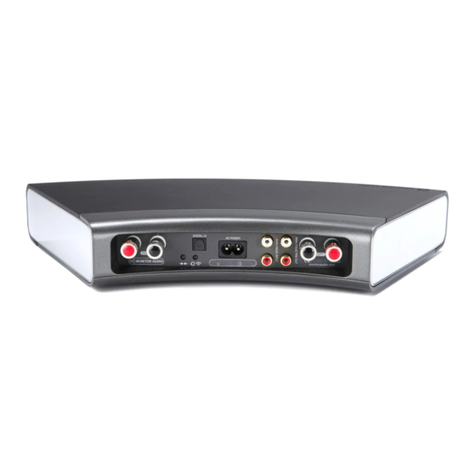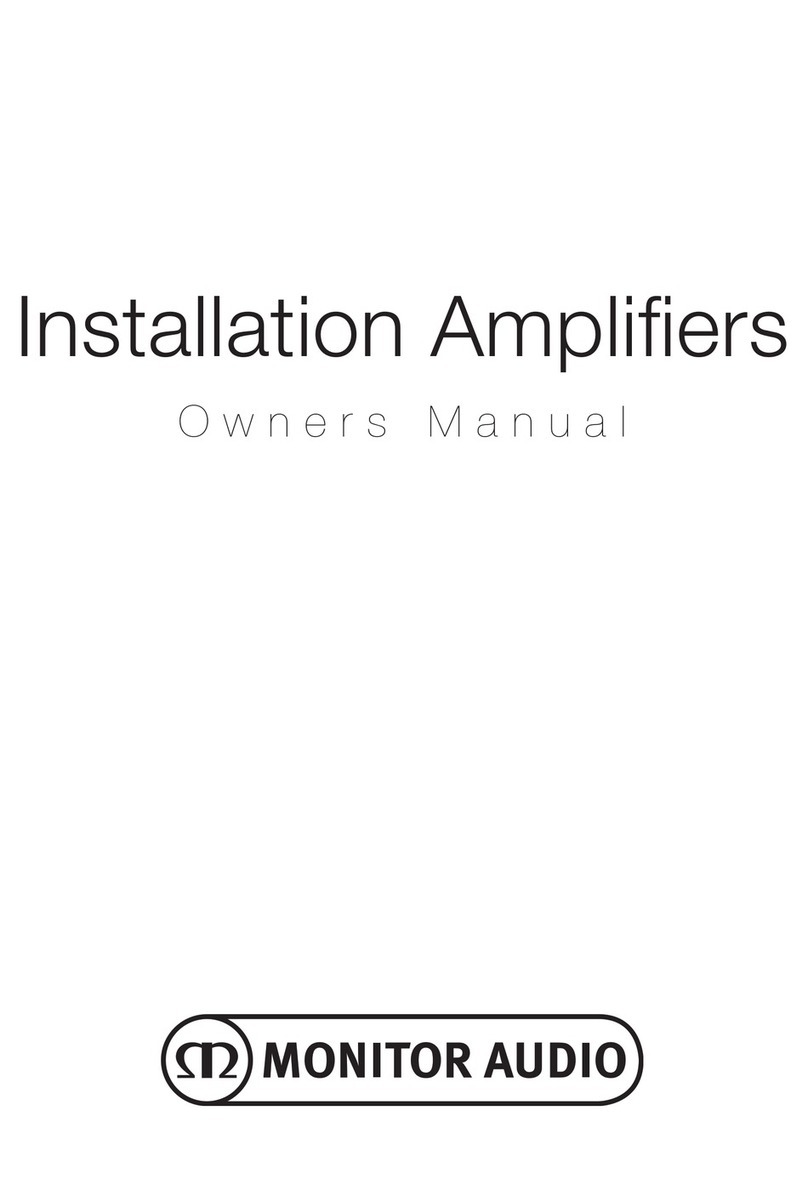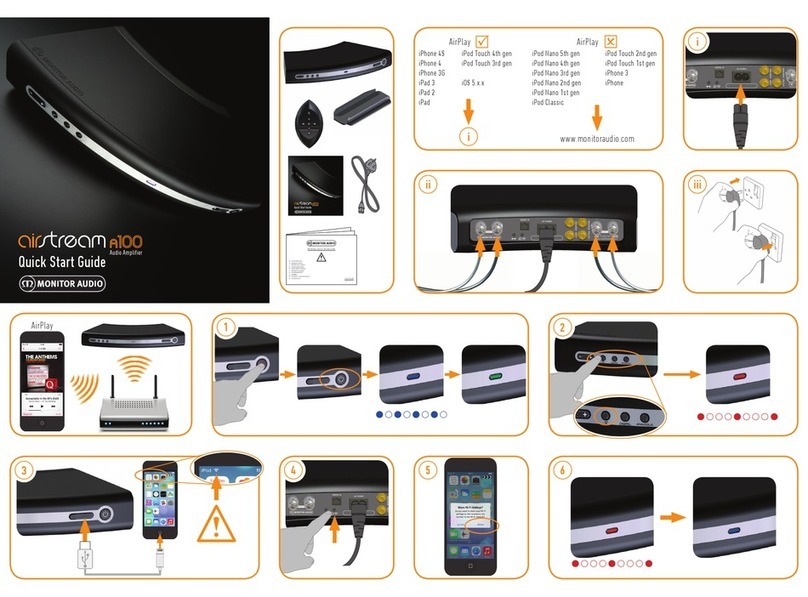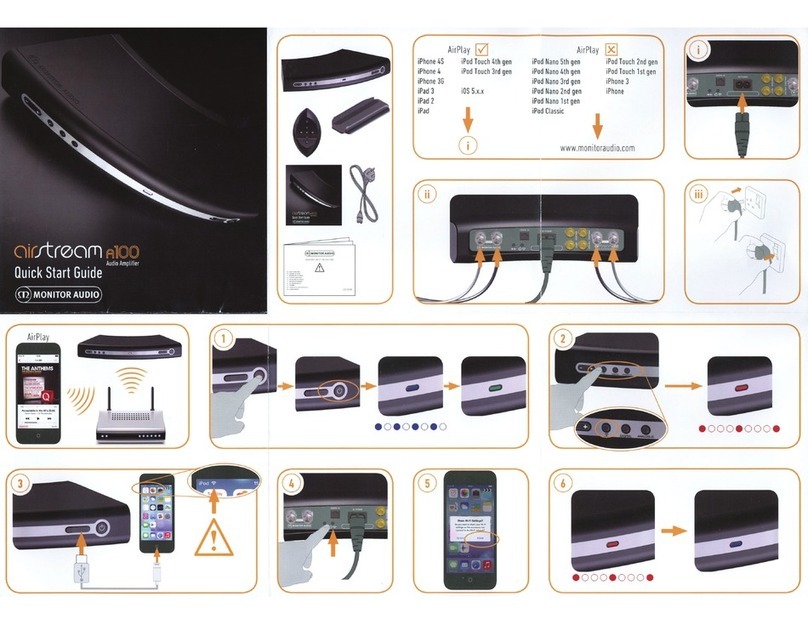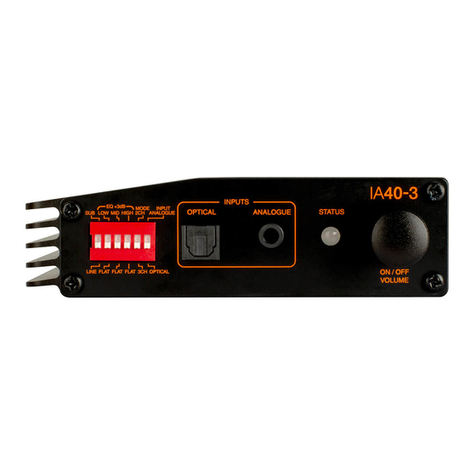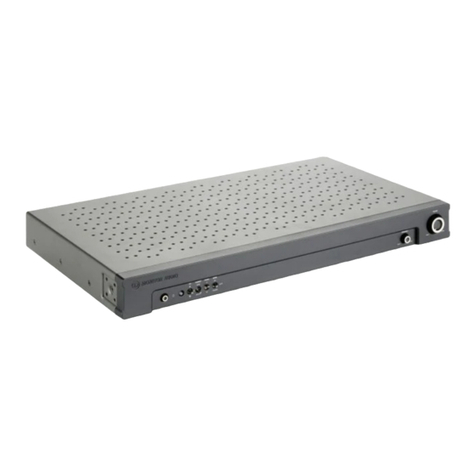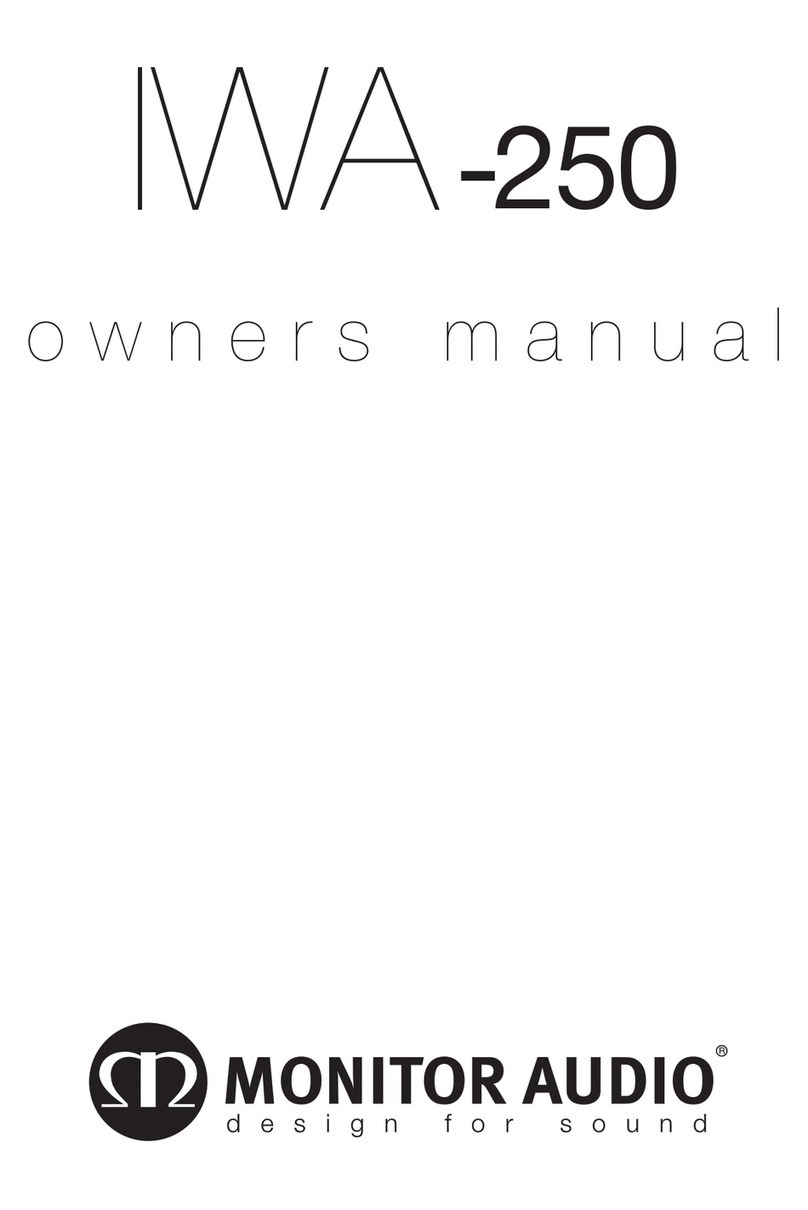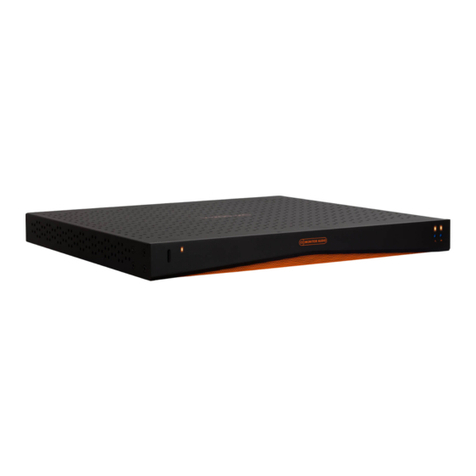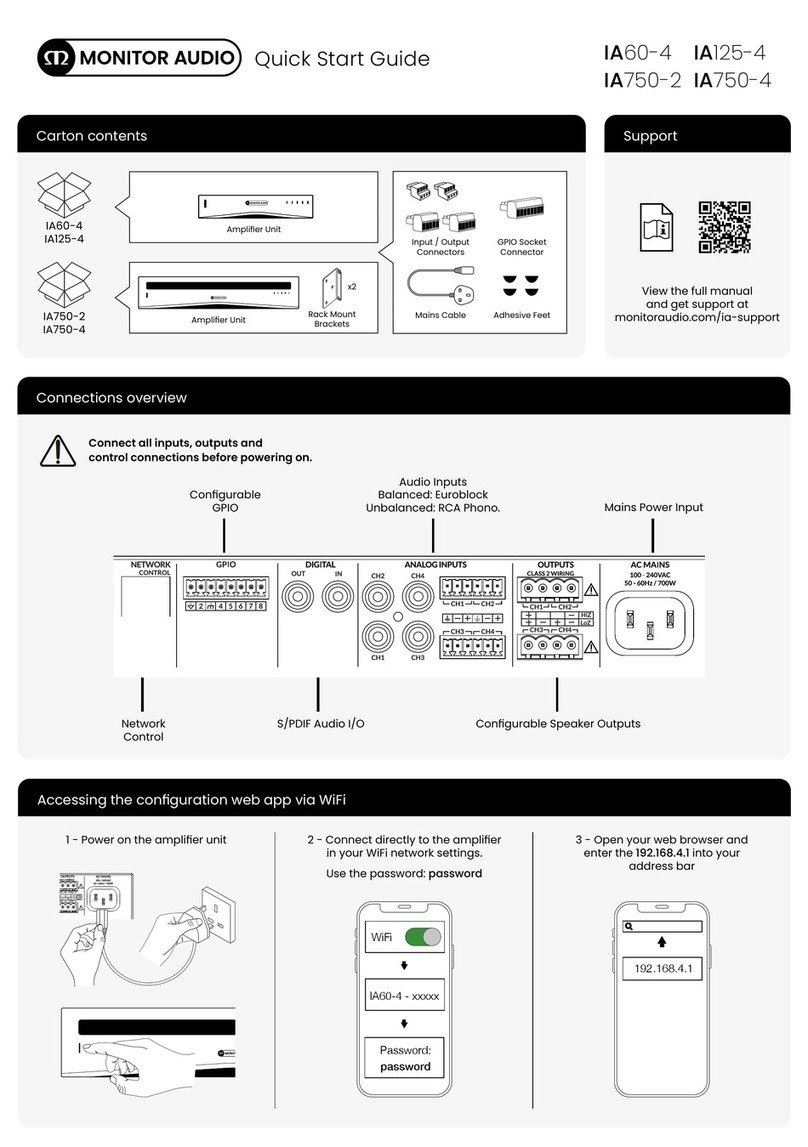
monitoraudio.com 5
The power supply can be tucked away elsewhere
or cable tied to the unit.
RS232
The IA40-3 can be controlled via the RS232 port by
sending a string of ASCII commands.
RS232 Wiring Configuration
The RS232 communication socket uses a standard
block connector from a 9 Pin D-Type Socket. This
should be wired as illustrated on the amp panel and
as shown below.
9 Pin D-Type
Socket Pin
Number
TX 3
RX 2
GND 5
RS232 Communication Set-Up
Parameters
Baud Rate: 115200
Data Size: 8
Parity: None
Stop Bits: 1
Handshaking/ Flow Control: None
Command Protocol
Each string of commands sent to the IA40-3
must follow the same structural protocol. These
commands are detailed in the Command List
opposite. To control the IA40-3 using RS232
commands, specific strings of characters must be
sent to the amplifier. Each command string should
be terminated by <CR> (the ASCII carriage return
character, 13 decimal). If using a Terminal Emulator
such as Tera Term just hit the enter key.
Command List
The following ASCII commands control the
operation of the IA40-3:
Amp On AON
Amp Off AOFF
Volume Up 1 Step UV1
Volume Down 1 Step DV1
Volume Up 5 Steps UV5
Volume Down 5 Steps DV5
Mute MUTE 1
Unmute MUTE 0
Get Current Volume GV
Send Volume Setting SV 0-81
Reset RESET
Note: The mute command is followed by
a space then a 0 or 1.
The SV command is followed by a space then
a value in the range of 0-81 to set the volume
level.
All other alphanumeric variables have no
space. Reset sets the amp in sleep mode,
volume at 40 and clears the remote codes.
Warranty
Both the craftsmanship and the performance of this
product is covered by the manufacturer’s warranty
against manufacturing defects provided that the
product was supplied by an authorised Monitor
Audio retailer under the consumer sale agreement.
For the period of cover please refer to the product
page on our website: monitoraudio.com for the
product you have purchased.
When purchasing Monitor Audio products, please
keep your receipt of purchase safe, as this validates
your warranty.
The Bluetooth word mark
and logos are registered
trademarks owned by Bluetooth SIG, Inc.and any
use of such marks by MONITOR AUDIO Ltd. is
under license. Other trademarks and trade names
are those of their respective owners.
Manufactured under
license from Dolby
Laboratories. Dolby, Dolby Audio, and the double-D
symbol are trademarks of Dolby Laboratories.
